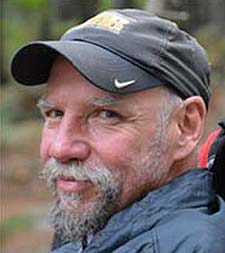By Phil Valentine
When it comes to evaluating the effectiveness of the recovery advocacy movement maybe it’s time to use The Casserole Measure.
In 2010, cancer assailed me. Compare my experience with cancer treatment to addiction treatment. I endured two inpatient chemo stays, a feeding tube installation that led to two other hospital stays, thirty-nine radiation treatments and more chemotherapy. The aggressive treatment left me emaciated, hairless and shaken. But cured.
I started this treatment with a lot of recovery capital. Here are some of the components. I had intentionally developed my faith for the last 20+ years. I had Sandy’s love and support. She organized the Valentine Battalion on Facebook and soon had hundreds of people praying for me. Sandy also served as my advocate within the healthcare system. My children surrounded me. My work supported me and didn’t fire me. My community did not shun me. For example, I was able to continue coaching soccer through the treatment. Finally, my recovery program provided tools for me to cope mentally and emotionally.
I was blessed. Consider treatment today. The supports I had are simply not accessible or available for most people when they seek help. Faith may have taken a back seat to fear, guilt, anger and shame. Spouses and loved ones may be fed up. Friends may have given up. Rarely does anyone advocate for them. The community may have turned a cold shoulder.
The supply of recovery capital, both external and internal, may be nearly depleted.
This brings me to casseroles. I first heard Dr. Tom Kirk, former Connecticut Department of Mental Health and Addiction Services Commissioner and former CCAR Board President speak about the casserole measure.
“We will know we have come a long way, when after a loved one goes off to treatment, neighbors bring the family a casserole.”
Borrowing Dr. Kirk’s concept, I ask audiences.
“How many of you received a casserole when you or a family member went away for addiction treatment?”
I have never seen anyone acknowledge that they had.
When I was in the hospital for chemotherapy and radiation, my family, friends and neighbors rallied around me. They helped with yard work. They helped with rides for my children. They stuffed our refrigerator with food with mostly, you guessed it, casseroles (and the occasional lasagna).
Think about it. What if…
A family receives a casserole when their loved one is either sick with addiction or away at treatment. The blue monkey (stigma) gets shoved aside. Judgment gets suspended. Care, compassion and love assume prominence.
Are you aware of a family suffering in the throes of an active addiction? Maybe it’s time for a casserole.
Addiction is isolation. Connection is recovery. Casseroles indicate a connection. The more casseroles we create, the more recovery thrives. If we begin to track the number of casseroles crafted for the sake of recovery, The Casserole Measure, I think we can evaluate how well a community is dealing with addiction and promoting recovery. I know that’s a stretch. It’s not exactly scientific, but we might as well…
Start cooking.
cas·se·role: noun 1. A kind of stew or side dish that is cooked slowly in an oven (“a chicken casserole”).
Phil “Right Click” Valentine
Recovery established 12.28.87

In 2015, I finished a thruhike of the entire Appalachian Trail, a trek of 2,189.2 miles. It took 189 days and 6 pairs of boots. During all that time alone with my Creator, my purpose in life became more precisely defined. I am, simply, to coach recovery. Recovery saved me from an early demise and brought purpose to my tattered life. I have learned that I’m a coach to my very core. I am blessed to put the two together. I started work at the Connecticut Community for Addiction Recovery (CCAR) in 1999. I became the Executive Director of this recovery community organization in 2004. I have trained the CCAR Recovery Coach Academy© dozens of times and have a hand in modifying, improving and adapting various recovery coach curricula. I’m old enough now to start considering my legacy. This is a way for me to share things I have learned in my recovery, in my role as Executive Director and a trainer. I find that when I speak I present the same messages over and over. It’s time to write them down.

When my wife decided to join me in recovery a few years ago no one brought over food. Truth is her “friends “changed, some not to be seen since. In November it was clear my wife suffered a stroke. Her mother brought over a casserole. Today there are more casseroles in the refrigerator then we can eat and she is in a wash of family and friends today. Let’s strive to become a “Casserole Nation”!
I just love this Phil !
Thank you
Paul Bowman
This is so good that I’ll start using it at my Center. Ty Phil.
Phil,
On my first year celebration at an AA meeting on June 28, 1982, 36 years ago, to my surprise my wife (of 42 years) walked in with a freshly baked cake with one candle. Casseroles are great and so are cakes. My sponsor of 35 years Lance still talks about that showing of love and support from my best friend.
Wonderful words, sentiments, and suggestions! When my son Ben, 19 years old, went into treatment, we received a few emails, one hand-written note, and no casseroles or home-baked cookies. We did have the family support group at Trilogy Recovery Community in Walla Walla — but outside that group, we felt so alone that we just huddled down, hoping and praying for good news. It was a long, rough, and lonely ride as I detail in my book “The Only Life I Could Save” but Ben is now 10+ years in joyful recovery.
I just posted this article on my website http://www.katherineketchambooks.com, hoping to do my part to make this a “casserole nation.”